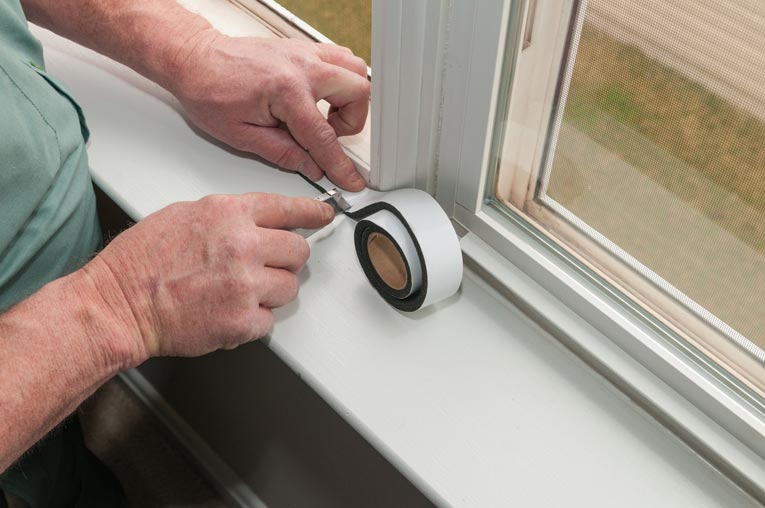
Interior tasks like changing air conditioner filters, painting walls, cleaning cabinets, and cleaning appliances are often easy to remember, but it’s important that you don’t forget to take care of your home’s exterior maintenance as well. Keeping up with exterior maintenance is critical to your home’s long term health. With good exterior maintenance, you can protect your home from the elements, keeping moisture, pests, rot, and decay out of your home. From inspecting your roof to patching up gaps, pressure washing your exterior, and fixing cracks in concrete, these important exterior maintenance tasks are important for keeping your home in great shape year round.
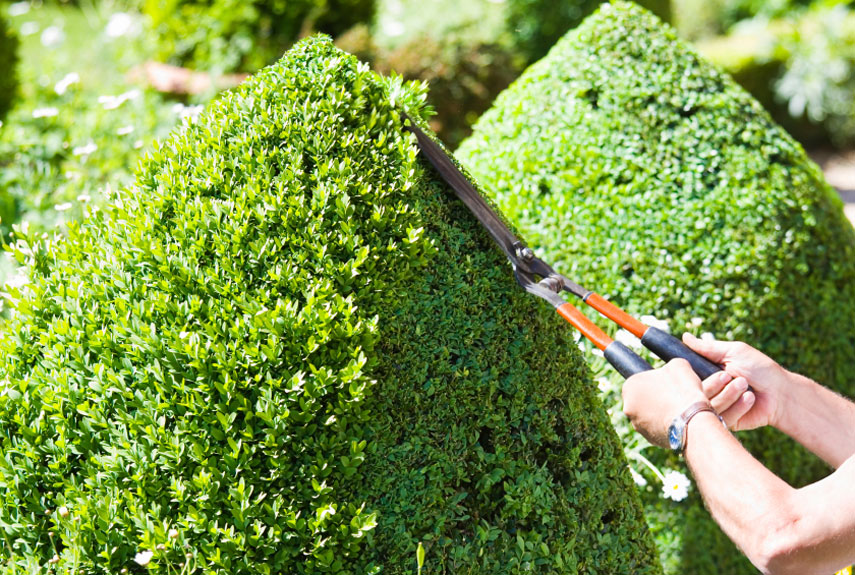 Trim back vegetation: Make sure that vegetation isn’t harming your home’s exterior. You’ll need to make sure tree branches aren’t hanging over your roof and damaging shingles. You should also make sure that any dense shrubs or other growth aren’t on your siding. You should keep at least a foot or two of space in between vegetation and your home.
Trim back vegetation: Make sure that vegetation isn’t harming your home’s exterior. You’ll need to make sure tree branches aren’t hanging over your roof and damaging shingles. You should also make sure that any dense shrubs or other growth aren’t on your siding. You should keep at least a foot or two of space in between vegetation and your home.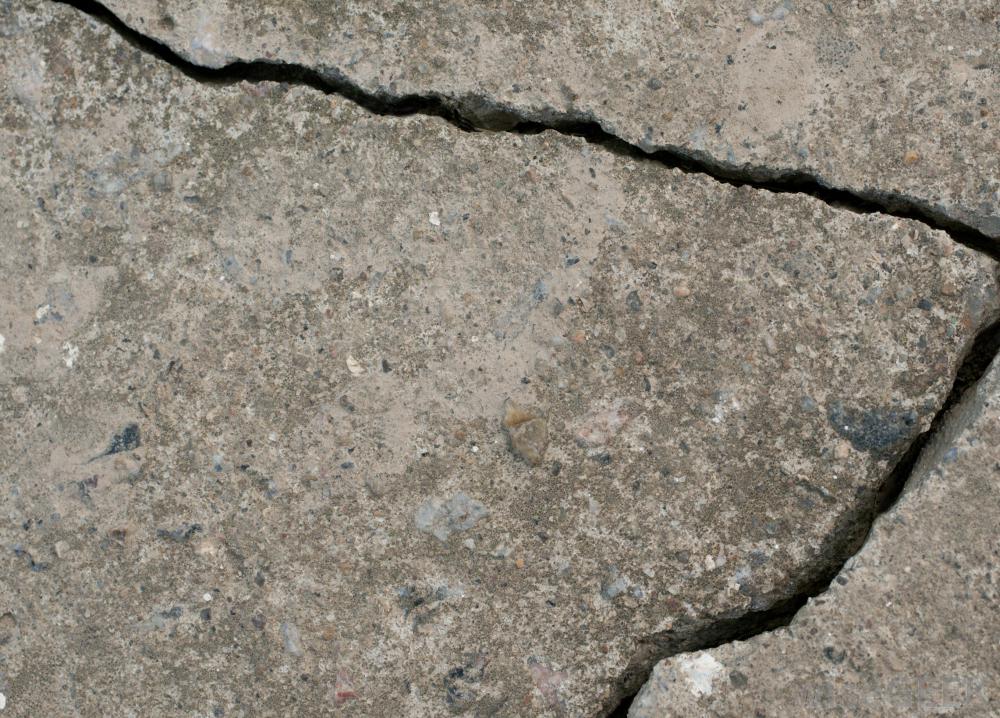 Fix cracks in concrete: Concrete can crack and wear down over time, requiring periodic maintenance and filling in. You should fix cracks in your concrete as soon as you notice them, as they are easier to repair while they are still small. Allow them to grow, and you’ll be looking at a bigger repair job, potentially one that requires professional help. You’ll also preserve the safety of walkways, which can become hazardous if cracks are present. And cracked concrete is simply unattractive, so it’s a good idea to get it fixed so your home looks better. To fix concrete cracks, you’ll need to clean them out and patch the crack with compound or caulk.
Fix cracks in concrete: Concrete can crack and wear down over time, requiring periodic maintenance and filling in. You should fix cracks in your concrete as soon as you notice them, as they are easier to repair while they are still small. Allow them to grow, and you’ll be looking at a bigger repair job, potentially one that requires professional help. You’ll also preserve the safety of walkways, which can become hazardous if cracks are present. And cracked concrete is simply unattractive, so it’s a good idea to get it fixed so your home looks better. To fix concrete cracks, you’ll need to clean them out and patch the crack with compound or caulk.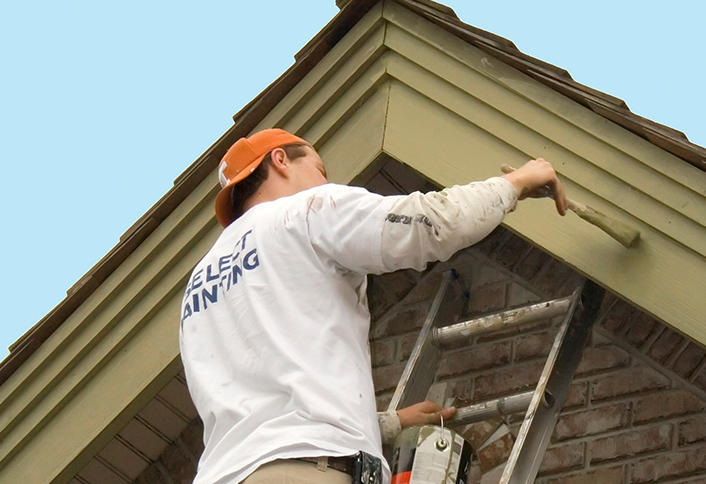 Paint the exterior: Keeping up with the paint on your home’s exterior will seal surfaces. This protects your home from moisture damage. You don’t necessarily have to paint every square inch, as a touch up may be all that’s needed. However, keep in mind that the color may not match up exactly. Keep an eye out for areas that frequently peel or lose paint, as this can be a sign of a more serious moisture issue.
Paint the exterior: Keeping up with the paint on your home’s exterior will seal surfaces. This protects your home from moisture damage. You don’t necessarily have to paint every square inch, as a touch up may be all that’s needed. However, keep in mind that the color may not match up exactly. Keep an eye out for areas that frequently peel or lose paint, as this can be a sign of a more serious moisture issue.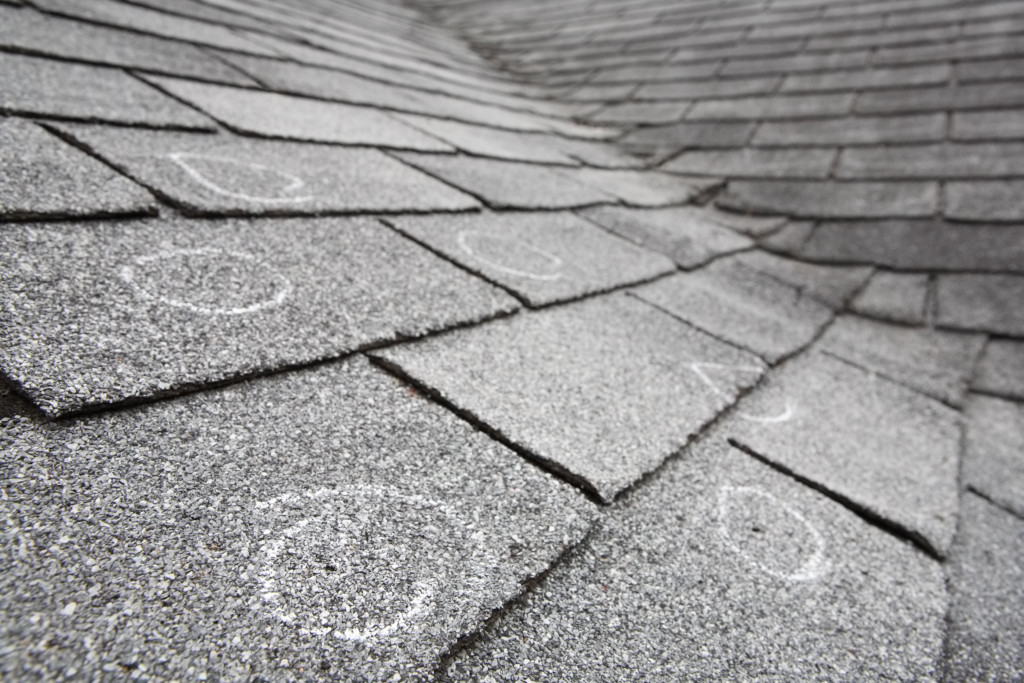 Inspect and repair roof: Your roof protects your home, but you may need to make updates to ensure it keeps protecting your home. With an exterior and interior inspection of your roof, you can find signs of defects and imperfections. These issues may let moisture, rot, even pests inside of your home and should be resolved immediately. An inspection will look for damaged or broken shingles, missing shingles, rust spots or cracked caulk on flashing, signs of decay, sagging, flashing damage, and more. Often, you can make repairs to your roof rather than completely replacing it, assuming your roof is not at the end of its expected lifespan.
Inspect and repair roof: Your roof protects your home, but you may need to make updates to ensure it keeps protecting your home. With an exterior and interior inspection of your roof, you can find signs of defects and imperfections. These issues may let moisture, rot, even pests inside of your home and should be resolved immediately. An inspection will look for damaged or broken shingles, missing shingles, rust spots or cracked caulk on flashing, signs of decay, sagging, flashing damage, and more. Often, you can make repairs to your roof rather than completely replacing it, assuming your roof is not at the end of its expected lifespan. Clean your exterior door: Your front door should be cleaned and inspected at least once a year. Use a gentle cleaner to wipe down the door. Avoid using abrasive tools that may scratch your door and do not scour or power wash the door. Simply wipe it down with wood cleaner, baby shampoo, or diluted dish soap. You’ll want to use as little water as possible and prevent water from pooling. Use a glass cleaner to wipe down glass panels.
Clean your exterior door: Your front door should be cleaned and inspected at least once a year. Use a gentle cleaner to wipe down the door. Avoid using abrasive tools that may scratch your door and do not scour or power wash the door. Simply wipe it down with wood cleaner, baby shampoo, or diluted dish soap. You’ll want to use as little water as possible and prevent water from pooling. Use a glass cleaner to wipe down glass panels. Inspect your front door: As you’re cleaning your door, perform a basic inspection of it. Look for damage to the door, weather stripping, and hardware components. You should be on alert for cracks in the glass or frame, moisture and fog in between panels, splits or signs of moisture, damage to the weatherstripping, or damage to the the sweep. You will also want to look for a chipped or peeling finish. If you find this, you’ll need to refinish your door.
Inspect your front door: As you’re cleaning your door, perform a basic inspection of it. Look for damage to the door, weather stripping, and hardware components. You should be on alert for cracks in the glass or frame, moisture and fog in between panels, splits or signs of moisture, damage to the weatherstripping, or damage to the the sweep. You will also want to look for a chipped or peeling finish. If you find this, you’ll need to refinish your door.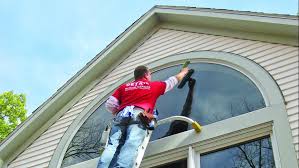 Clean exterior windows: Clean exterior windows make your home look nice — but they also protect the lifespan of your windows. Over time, harsh elements outdoors can damage your windows. Weather damage, pollution, minerals, rust, and other elements can adhere to the glass, causing buildup and damage. Clean your windows, and you’ll not only see better outside, you’ll keep your windows healthy and well maintained.
Clean exterior windows: Clean exterior windows make your home look nice — but they also protect the lifespan of your windows. Over time, harsh elements outdoors can damage your windows. Weather damage, pollution, minerals, rust, and other elements can adhere to the glass, causing buildup and damage. Clean your windows, and you’ll not only see better outside, you’ll keep your windows healthy and well maintained.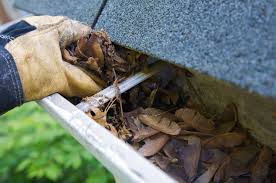 Clean gutters: Gutters often get clogged with leaves, seeds, and other debris. This can lead to problems including overflow, mold, rot, pest infestations, and even flooding damage. It an also diminish the lifespan of your shingles and paint. While gutter cleaning is especially important in late fall, it is important year round to keep your drainage system working free of cloges and to avoid damage. You should also inspect your gutters for damage and sagging and repair any issues.
Clean gutters: Gutters often get clogged with leaves, seeds, and other debris. This can lead to problems including overflow, mold, rot, pest infestations, and even flooding damage. It an also diminish the lifespan of your shingles and paint. While gutter cleaning is especially important in late fall, it is important year round to keep your drainage system working free of cloges and to avoid damage. You should also inspect your gutters for damage and sagging and repair any issues.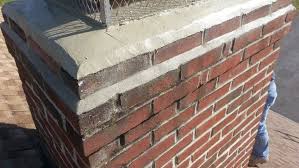 Perform a chimney inspection: Make sure that your chimney is well maintained with an inspection. You’ll want to look at exterior walls for deterioration, check that the top is sealed around the flue, and that the rain cap is installed. Make sure that protective screens are in place. There may be water damage, cracks in the masonry, or even evidence of birds or animals. These issues will need to be resolved for fire safety, moisture protection, and keeping pests out of your home.
Perform a chimney inspection: Make sure that your chimney is well maintained with an inspection. You’ll want to look at exterior walls for deterioration, check that the top is sealed around the flue, and that the rain cap is installed. Make sure that protective screens are in place. There may be water damage, cracks in the masonry, or even evidence of birds or animals. These issues will need to be resolved for fire safety, moisture protection, and keeping pests out of your home.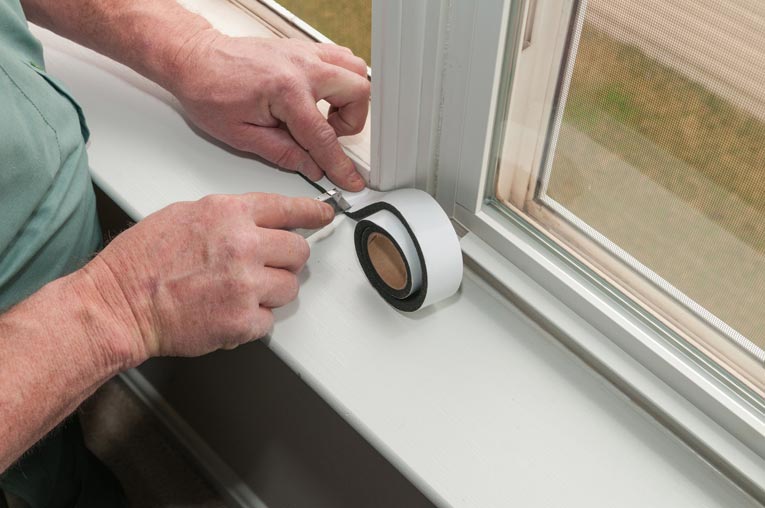 Check weatherstripping on windows and doors: With weatherstripping, your home is protected from drafts and loss of energy through your windows and doors. Make sure you’re supporting a strong exterior by checking and updating the weatherstripping on your home’s windows and doors. You may need to remove old weatherstripping and apply new material to put up stronger protection.
Check weatherstripping on windows and doors: With weatherstripping, your home is protected from drafts and loss of energy through your windows and doors. Make sure you’re supporting a strong exterior by checking and updating the weatherstripping on your home’s windows and doors. You may need to remove old weatherstripping and apply new material to put up stronger protection.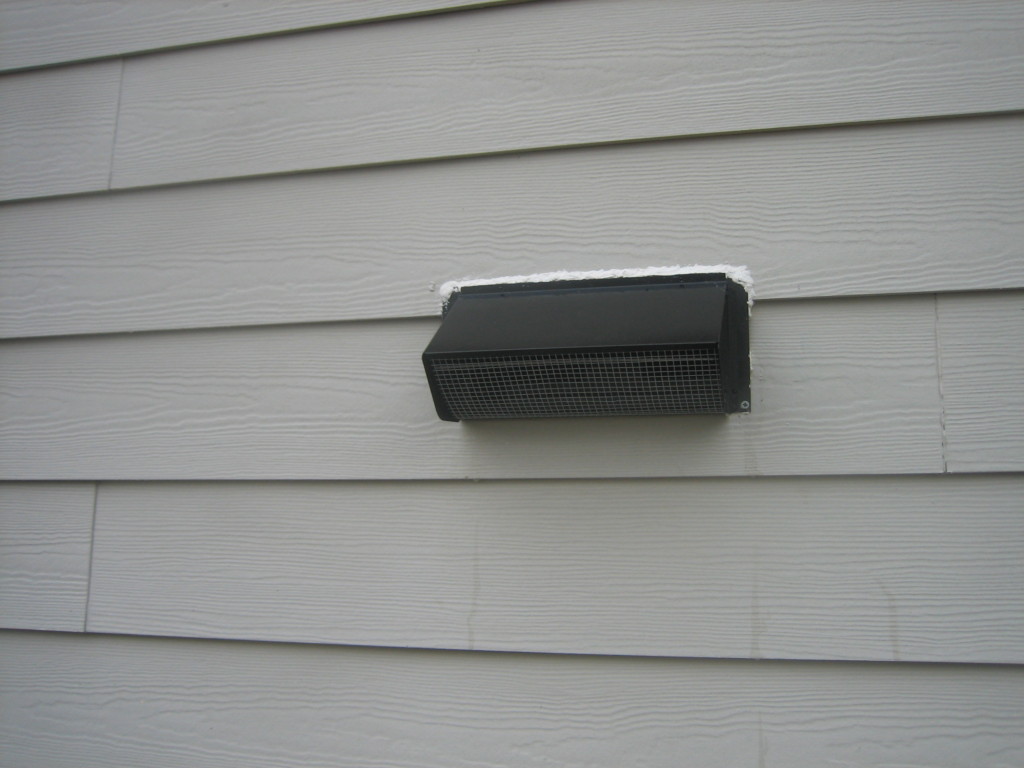 Inspect exterior vents, covers, and dampers: Make sure that all openings to your home, such as covers, dampers, and vents, are functional and clean. They should be securely attached with screens where needed. You should also make sure that they do not have any buildup, such as lint buildup on a dryer vent.
Inspect exterior vents, covers, and dampers: Make sure that all openings to your home, such as covers, dampers, and vents, are functional and clean. They should be securely attached with screens where needed. You should also make sure that they do not have any buildup, such as lint buildup on a dryer vent.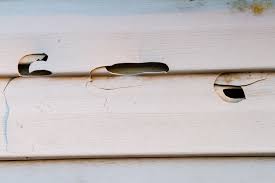 Inspect siding: Cracked, mildweing, or rotting siding can spell big trouble for your home. Inspect your siding to catch these problems early. You should repair, paint, and even replace siding that is not in good shape.
Inspect siding: Cracked, mildweing, or rotting siding can spell big trouble for your home. Inspect your siding to catch these problems early. You should repair, paint, and even replace siding that is not in good shape.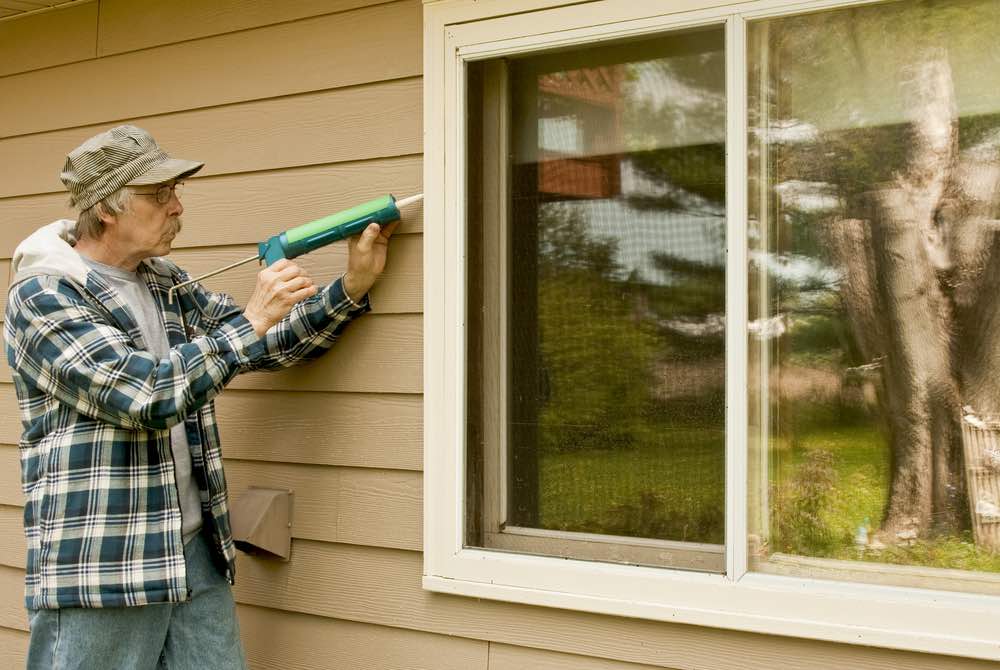 Inspect and repair window gaps: Make sure that there are no gaps between your trim and exterior siding or any other area along your windows and doors. You may need to apply new caulk or remove and replace the caulk along these lines.
Inspect and repair window gaps: Make sure that there are no gaps between your trim and exterior siding or any other area along your windows and doors. You may need to apply new caulk or remove and replace the caulk along these lines.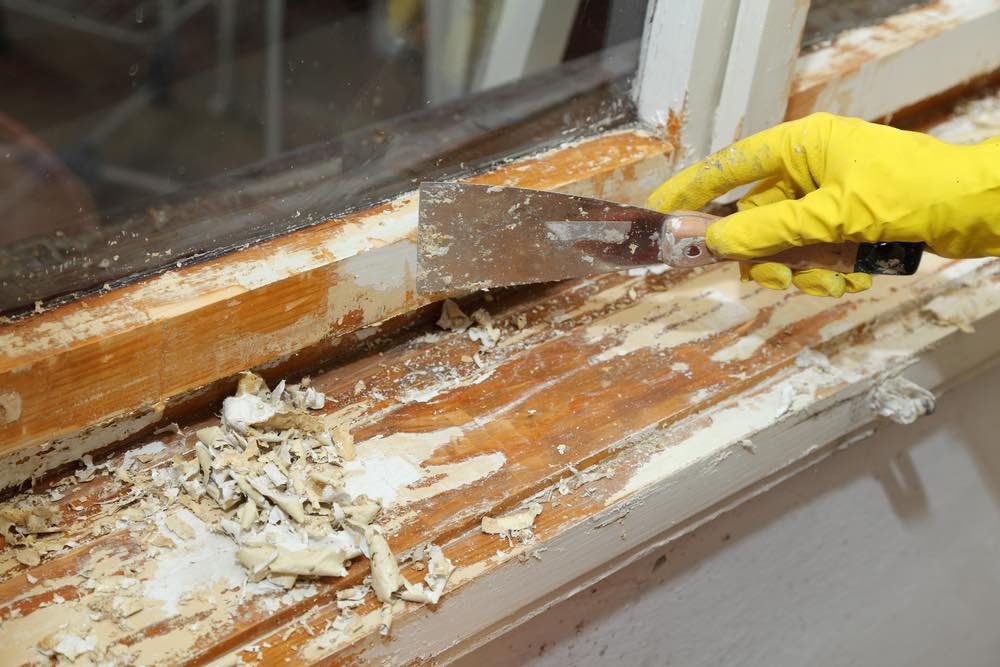 Repair rotted wood on windows: Wooden window frames may be subject to moisture induced rot. Rotted window frames have to be repaired, or you may have to replace the entire window. You will need to remove all of the rot and fill it in with wood filler.
Repair rotted wood on windows: Wooden window frames may be subject to moisture induced rot. Rotted window frames have to be repaired, or you may have to replace the entire window. You will need to remove all of the rot and fill it in with wood filler.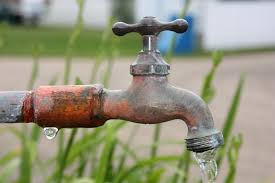 Inspect outdoor water spigots: Test your outdoor water spigot for leaks. You’ll need to fully turn on the water and then cover the faucet with your thumb. If you’re able to stop the flow, you may have a leak in the line.
Inspect outdoor water spigots: Test your outdoor water spigot for leaks. You’ll need to fully turn on the water and then cover the faucet with your thumb. If you’re able to stop the flow, you may have a leak in the line.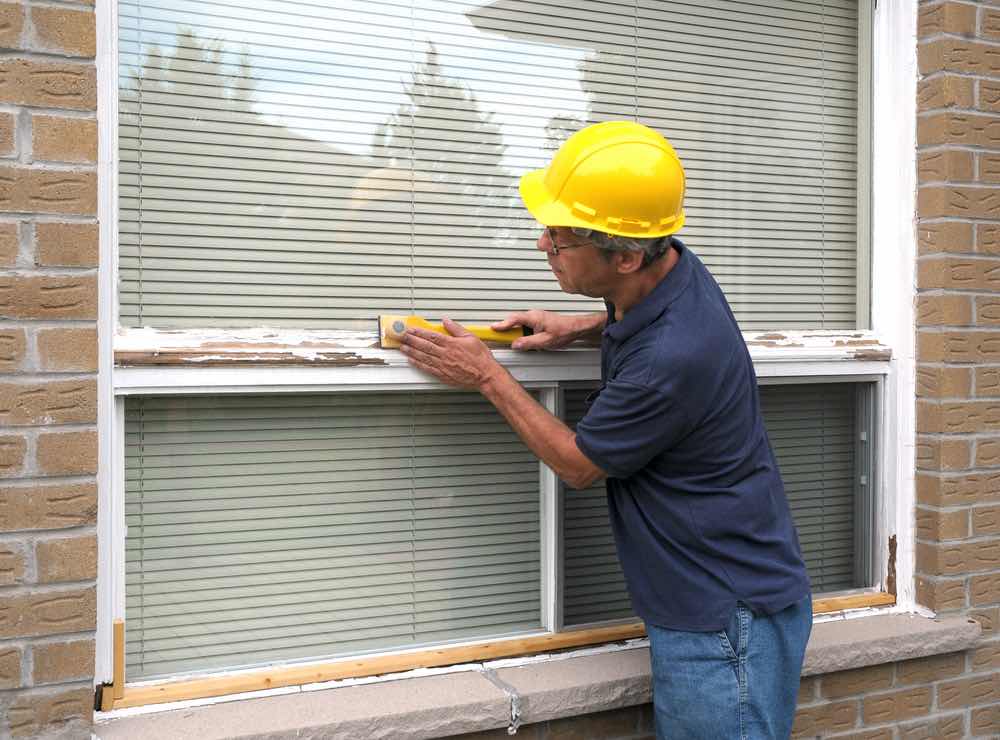 Refinish wood window exteriors: Protect wooden window frames from the elements with a protective coat of paint. Look for cracking, peeling, and blistering paint that may allow in moisture and lead to rotting. Be sure to patch any cracks or even completely refinish window frames for the best protection.
Refinish wood window exteriors: Protect wooden window frames from the elements with a protective coat of paint. Look for cracking, peeling, and blistering paint that may allow in moisture and lead to rotting. Be sure to patch any cracks or even completely refinish window frames for the best protection.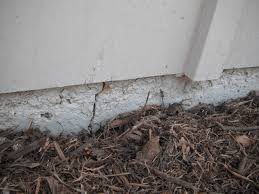 Inspect the foundation: Your foundation may have cracks or deterioration that indicate a serious problem. Inspect your foundation for cracks and other signs of damage to identify foundation issues before they become a big problem. Call a professional for repairs if you identify issues with your foundation.
Inspect the foundation: Your foundation may have cracks or deterioration that indicate a serious problem. Inspect your foundation for cracks and other signs of damage to identify foundation issues before they become a big problem. Call a professional for repairs if you identify issues with your foundation.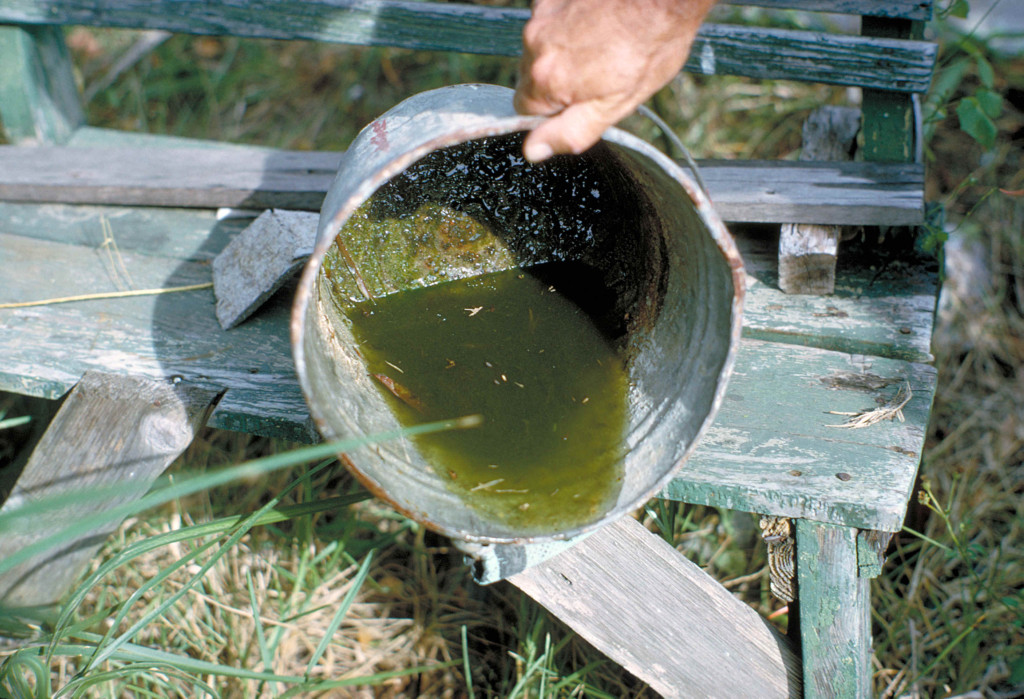 Check for mosquito pools: Look on the ground around your foundation and in other areas of your yard for potential mosquito pools. These are areas where water pools and offers a breeding ground for mosquitos. They can also lead to leaks in your basement. You should especially look around your foundation for areas that have been washed out by snow, ice, or downspouts. Fill in all of these pools to discourage mosquito growth.
Check for mosquito pools: Look on the ground around your foundation and in other areas of your yard for potential mosquito pools. These are areas where water pools and offers a breeding ground for mosquitos. They can also lead to leaks in your basement. You should especially look around your foundation for areas that have been washed out by snow, ice, or downspouts. Fill in all of these pools to discourage mosquito growth.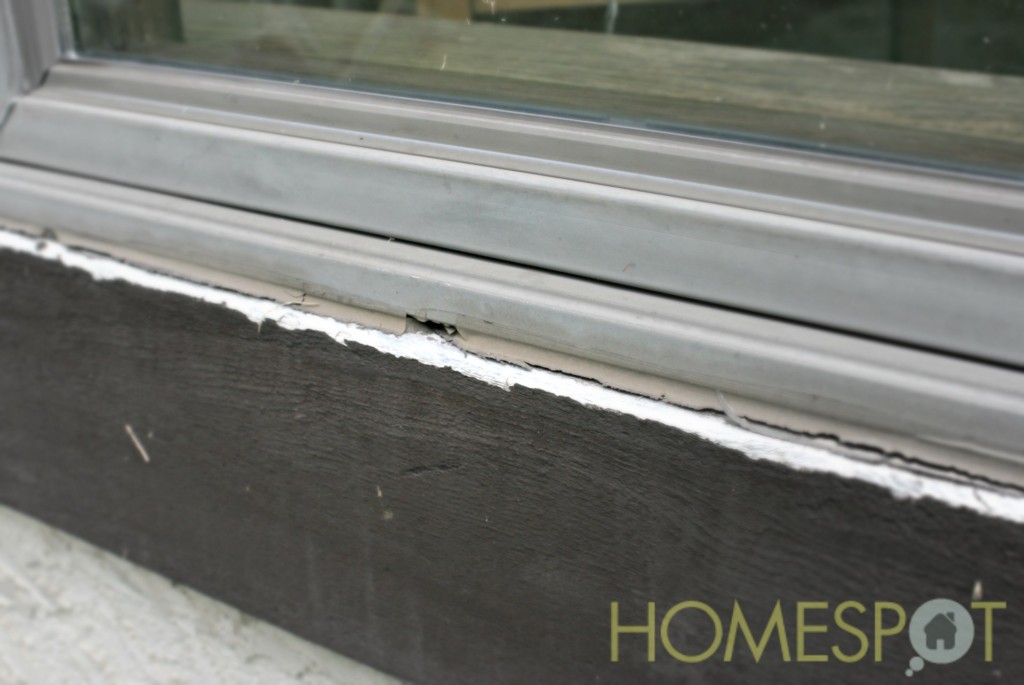 Seal all gaps: Look for gaps where bugs, cold air, and pests can enter your home. Use caulk to seal small gaps you find, including around windows and doors. For larger gaps, consider replacing the trim or hardware. Vents can be covered with heavy duty screens or hardware cloth.
Seal all gaps: Look for gaps where bugs, cold air, and pests can enter your home. Use caulk to seal small gaps you find, including around windows and doors. For larger gaps, consider replacing the trim or hardware. Vents can be covered with heavy duty screens or hardware cloth.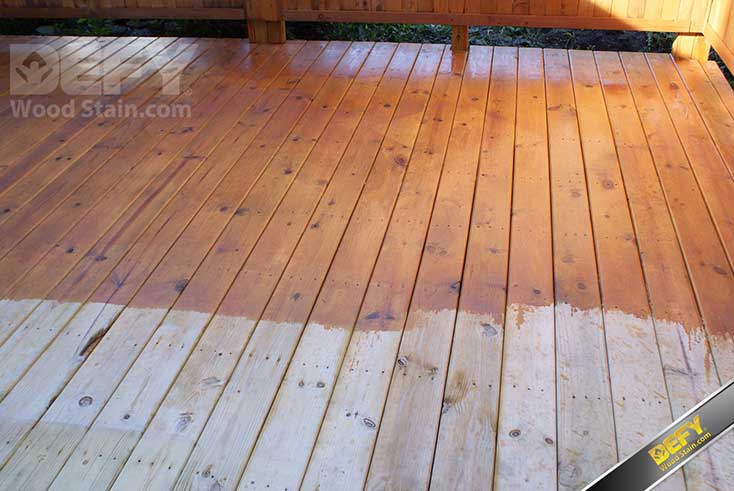 Clean, stain, and/or seal decking: Clean and pressure wash your deck, and while you’re at it, consider whether or not it’s time to reapply stain or sealant. Inspect the deck for cracks and signs of wear and repair as needed.
Clean, stain, and/or seal decking: Clean and pressure wash your deck, and while you’re at it, consider whether or not it’s time to reapply stain or sealant. Inspect the deck for cracks and signs of wear and repair as needed.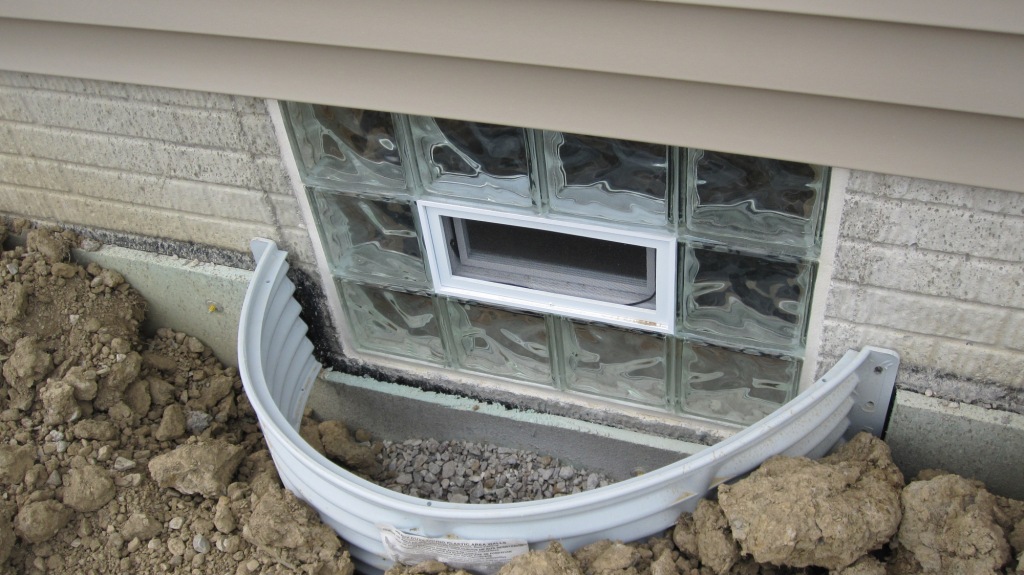 Inspect basement windows: In the late fall, be sure to take a look at basement windows before snow starts to fall. You’ll want to look for drafts, loose frames, and cracked panes that could allow cold air and moisture into your basement. Seal drafts with caulk and fix frames or cracked panes. You should also clean window wells of all debris including leaves, trash, and even animals.
Inspect basement windows: In the late fall, be sure to take a look at basement windows before snow starts to fall. You’ll want to look for drafts, loose frames, and cracked panes that could allow cold air and moisture into your basement. Seal drafts with caulk and fix frames or cracked panes. You should also clean window wells of all debris including leaves, trash, and even animals.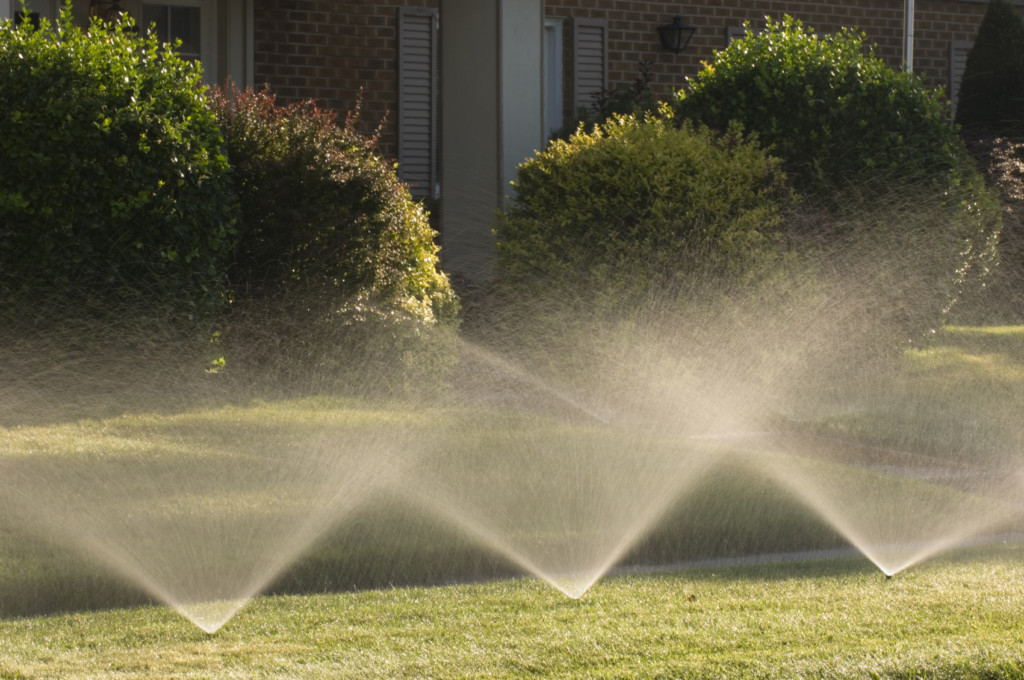 Inspect irrigation systems: When you’re starting up your sprinkler system for the spring and summer, be sure to check it out for line leaks and damage. Turn your system on one zone at a time and take a look at each rotor and head to make sure they’re spraying in the proper direction while distributing water evenly.
Inspect irrigation systems: When you’re starting up your sprinkler system for the spring and summer, be sure to check it out for line leaks and damage. Turn your system on one zone at a time and take a look at each rotor and head to make sure they’re spraying in the proper direction while distributing water evenly.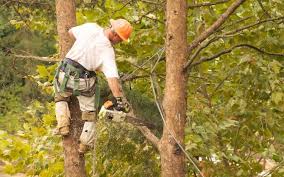 Remove fallen branches and clear the yard: Pick up fallen branches from the yard and clear other debris. This will keep your home looking neat and discourage pests like snakes and insects from setting up homes in fallen vegetation.
Remove fallen branches and clear the yard: Pick up fallen branches from the yard and clear other debris. This will keep your home looking neat and discourage pests like snakes and insects from setting up homes in fallen vegetation.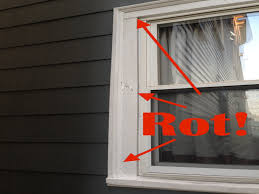 Replace rotten or cracked trim: Inspect trim around windows, doors, and along the roof and siding. Identify any areas of rot and replace them. This is important for making your house look good and also preventing water from infiltrating beyond trim pieces.
Replace rotten or cracked trim: Inspect trim around windows, doors, and along the roof and siding. Identify any areas of rot and replace them. This is important for making your house look good and also preventing water from infiltrating beyond trim pieces.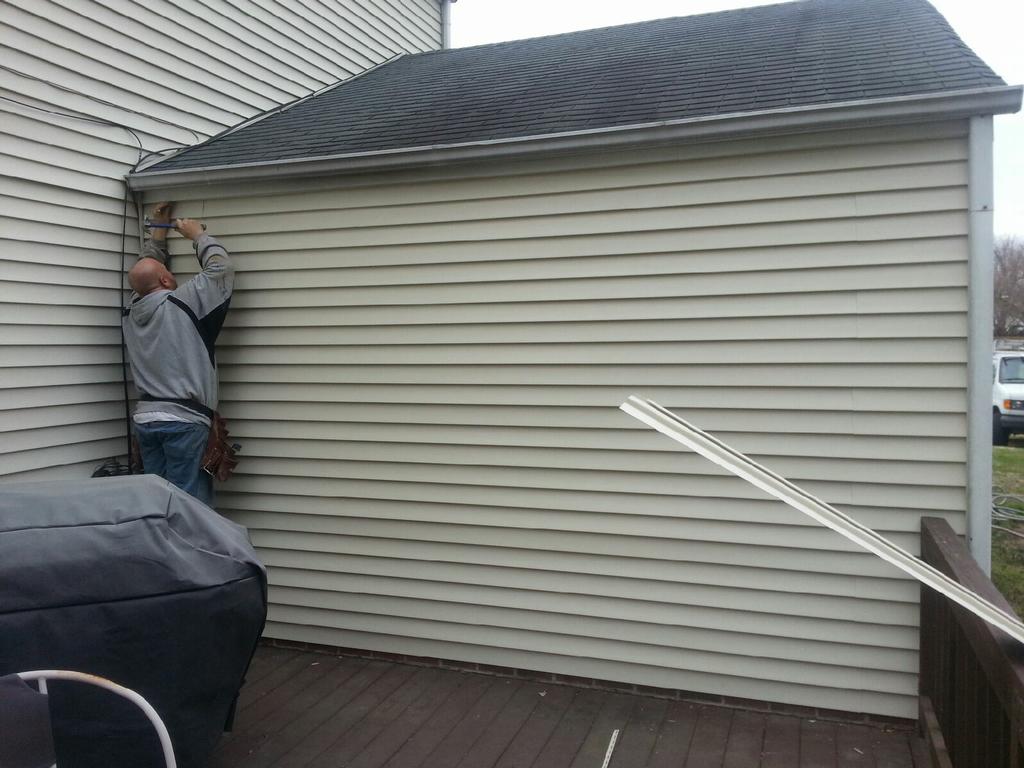 Repair broken or cracked walls: Inspect your exterior to identify cracked walls, broken siding, and gaps or cracks in siding panels, stucco, and brick or stone walls. Any of these imperfections should be patched up or completely replaced.
Repair broken or cracked walls: Inspect your exterior to identify cracked walls, broken siding, and gaps or cracks in siding panels, stucco, and brick or stone walls. Any of these imperfections should be patched up or completely replaced.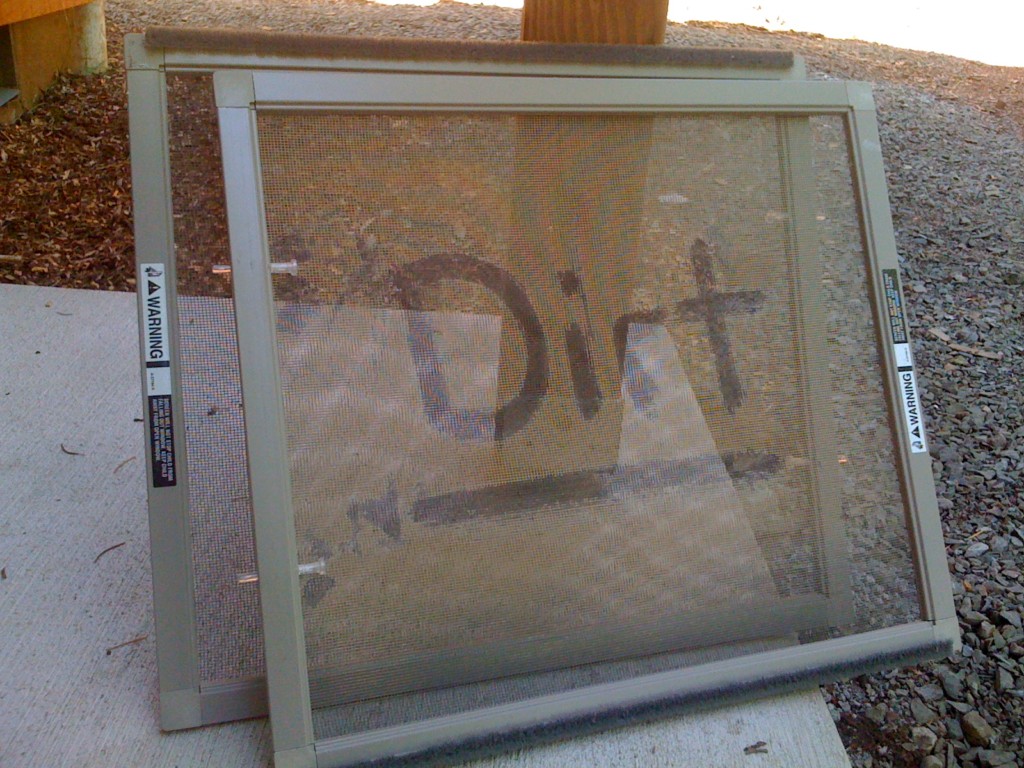 Clean and repair window screens: Broken window screens can let pests in when you open your windows, and dirt can build up. Remove and clean window screens with soapy water.
Clean and repair window screens: Broken window screens can let pests in when you open your windows, and dirt can build up. Remove and clean window screens with soapy water.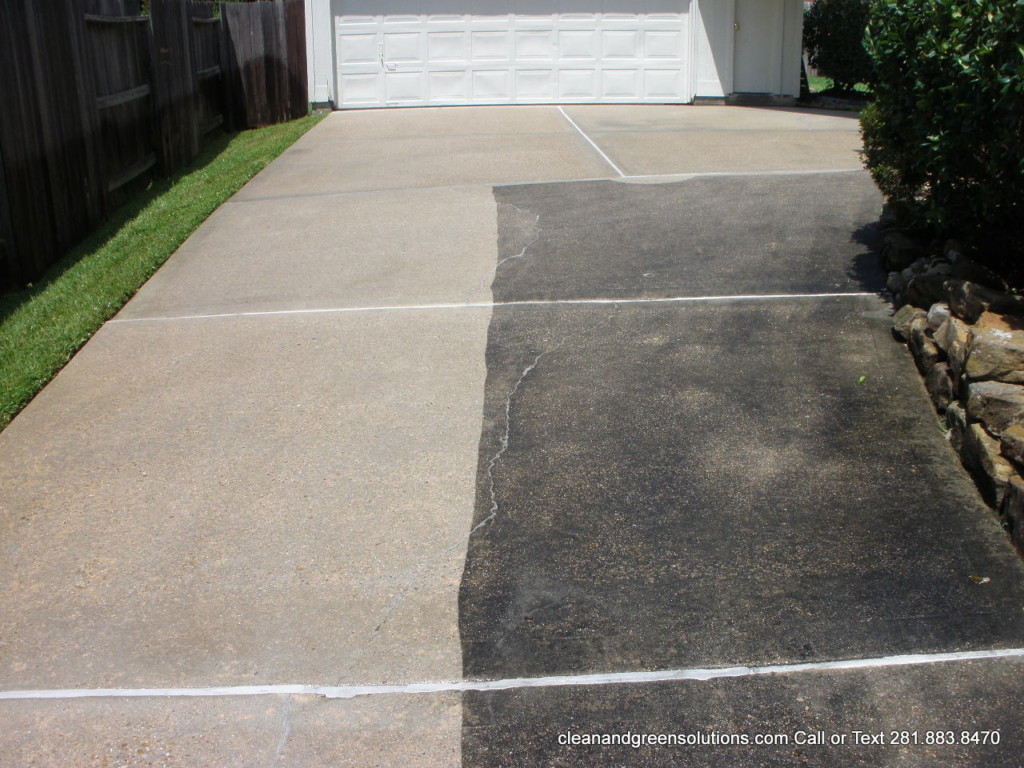 Clean your driveway and walkways: Your driveway and walkways are full of dirt, grime, mold, mildew, and toxins — and all of those can be tracked into your home and even cause slips and falls. Pressure wash your driveway and walkways, removing not just stains, but harmful buildup. It’s also a good idea to seal your driveway to further protect against grime.
Clean your driveway and walkways: Your driveway and walkways are full of dirt, grime, mold, mildew, and toxins — and all of those can be tracked into your home and even cause slips and falls. Pressure wash your driveway and walkways, removing not just stains, but harmful buildup. It’s also a good idea to seal your driveway to further protect against grime.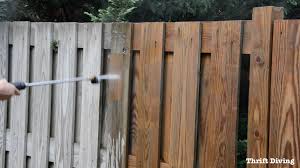 Clean fences: Allowing mold and mildew growth on fences can lead to rot and decay, shortening the useful lifespan of your fence. To protect your fence and keep it looking good, take a pressure washer to it. This will remove dirt and buildup and reveal a cleaner surface below.
Clean fences: Allowing mold and mildew growth on fences can lead to rot and decay, shortening the useful lifespan of your fence. To protect your fence and keep it looking good, take a pressure washer to it. This will remove dirt and buildup and reveal a cleaner surface below.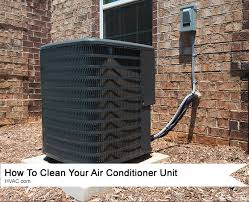 Clean your air conditioner unit: For the best airflow and efficiency, you should clean your exterior air conditioner of dirt and surrounding growth. You should carefully inspect and clean the exterior unit. Also be sure to cover the unit to protect it from snow, ice, and debris during the winter months.
Clean your air conditioner unit: For the best airflow and efficiency, you should clean your exterior air conditioner of dirt and surrounding growth. You should carefully inspect and clean the exterior unit. Also be sure to cover the unit to protect it from snow, ice, and debris during the winter months.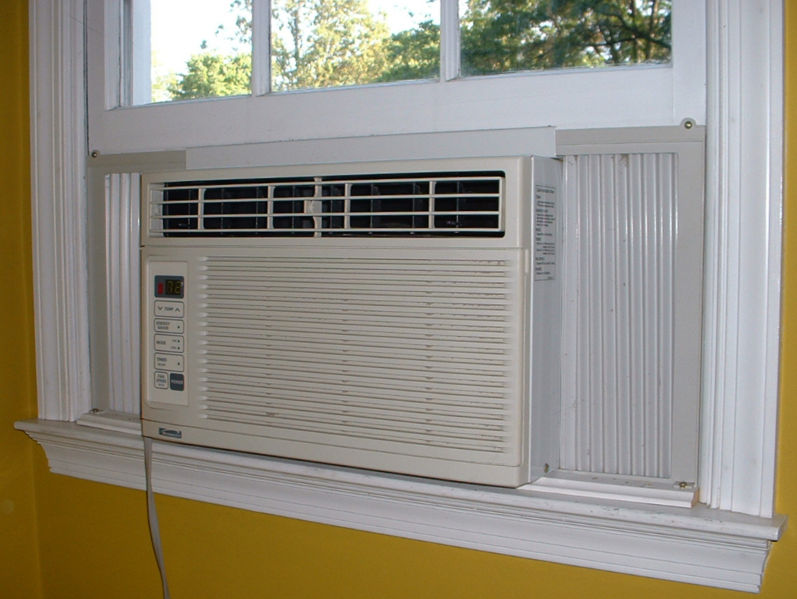 Seal window unit air conditioners: Minimize air drafts by sealing window or wall air conditioning units. Or, simply remove them when not in use.
Seal window unit air conditioners: Minimize air drafts by sealing window or wall air conditioning units. Or, simply remove them when not in use.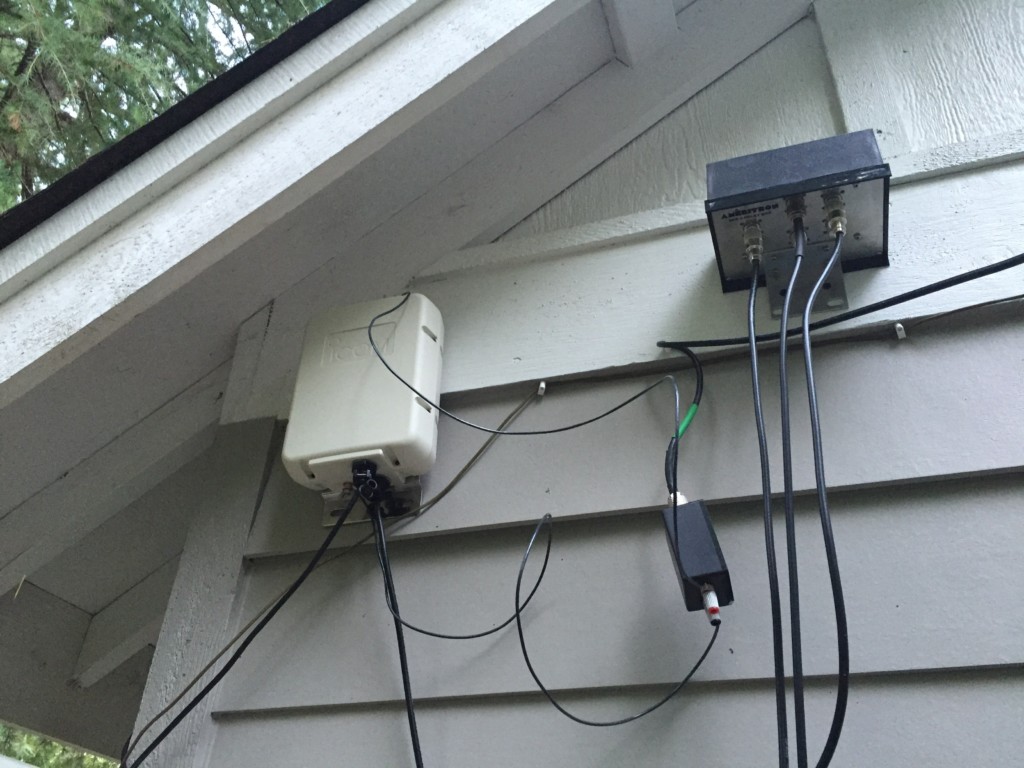 Close up unsealed lines: When you have services installed, such as phone, cable, and even wiring, plumbing, or heating and air conditioning, the installer may not properly close up all openings. Make sure that all of these unsealed penetrations are carefully closed up with foam or caulk.
Close up unsealed lines: When you have services installed, such as phone, cable, and even wiring, plumbing, or heating and air conditioning, the installer may not properly close up all openings. Make sure that all of these unsealed penetrations are carefully closed up with foam or caulk.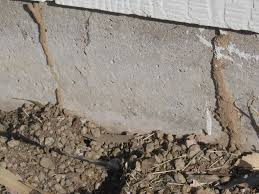 Inspect for termites: You should periodically inspect your home for termites. This is typically a job for a professional termite inspector, however, you can do an initial inspection to look for obvious signs of infestation, such as swarms and wood decay. Keep an eye out especially around your foundation and where concrete meets wooden structure. Keep in mind that termites can eat wood as well as plaster and metal siding.
Inspect for termites: You should periodically inspect your home for termites. This is typically a job for a professional termite inspector, however, you can do an initial inspection to look for obvious signs of infestation, such as swarms and wood decay. Keep an eye out especially around your foundation and where concrete meets wooden structure. Keep in mind that termites can eat wood as well as plaster and metal siding. Check supports, stairs, and railings on decks and porches: Look for signs of wear, decay, and damage on deck and porch supports, stairs, and railings. Repair or replace any damage and decay.
Check supports, stairs, and railings on decks and porches: Look for signs of wear, decay, and damage on deck and porch supports, stairs, and railings. Repair or replace any damage and decay.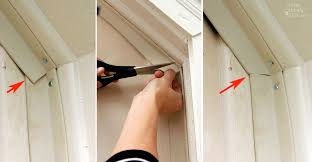 Install weather stripping on your garage door: Adding weather stripping to your garage door can help you retain heat or cool air in your garage. This simple and inexpensive project is especially important in garages that are attached to the home, as warm or cool air can escape.
Install weather stripping on your garage door: Adding weather stripping to your garage door can help you retain heat or cool air in your garage. This simple and inexpensive project is especially important in garages that are attached to the home, as warm or cool air can escape.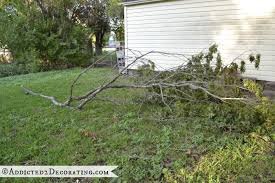 Trim trees: Remove or trim tree limbs that come close to your home, especially along the roof. They can damage shingles, siding, gutters, and windows, leading to damage. It’s also a good idea to check tree growth near electric lines — but remember to trim with caution, particularly near electric lines.
Trim trees: Remove or trim tree limbs that come close to your home, especially along the roof. They can damage shingles, siding, gutters, and windows, leading to damage. It’s also a good idea to check tree growth near electric lines — but remember to trim with caution, particularly near electric lines.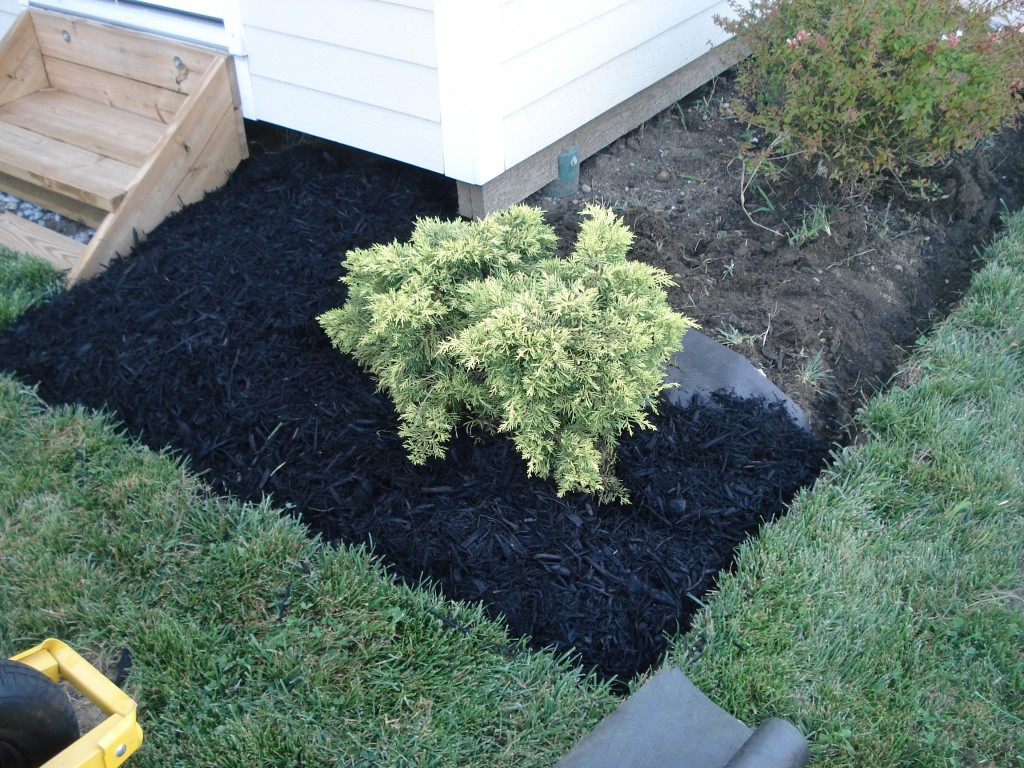 Add mulch to flower beds: Adding mulch to your flower beds can reduce weeds and help them retain moisture. This is especially important during the hot summer months.
Add mulch to flower beds: Adding mulch to your flower beds can reduce weeds and help them retain moisture. This is especially important during the hot summer months.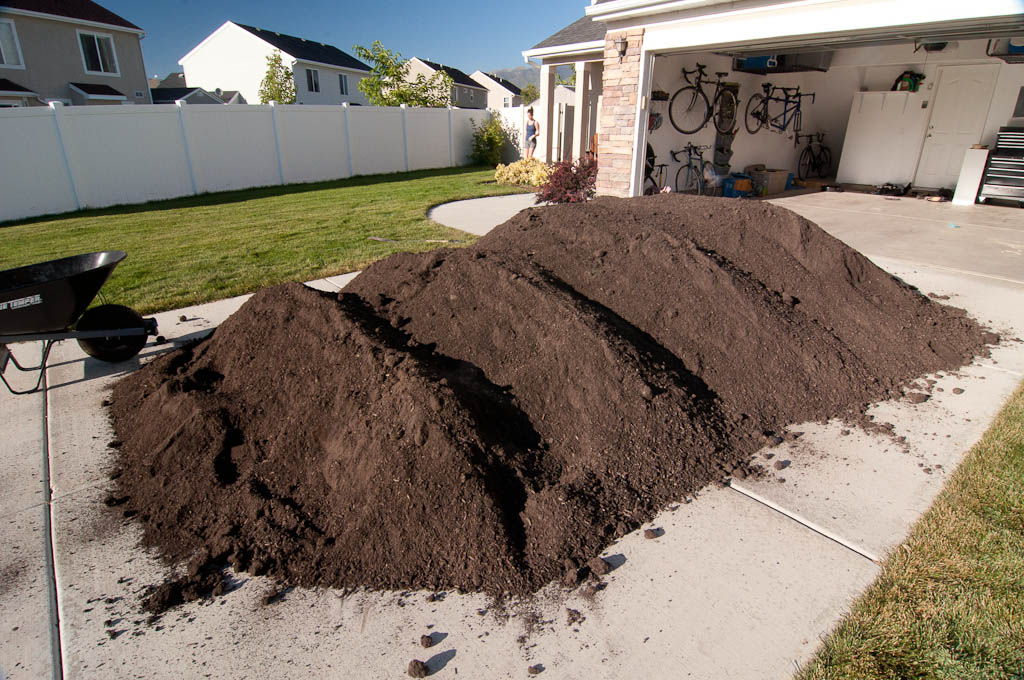 Fill in low yard areas: Low areas or holes in your yard can encourage pooling and can even become tripping hazards. Bring in more soil to fill in low areas in your yard.
Fill in low yard areas: Low areas or holes in your yard can encourage pooling and can even become tripping hazards. Bring in more soil to fill in low areas in your yard.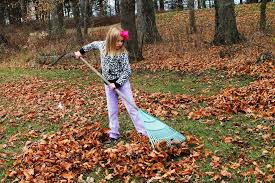 Rake dead leaves from the yard: A layer of dead leaves can prevent sunlight, water, and nutrients from reaching your grass. Allow dead leaves to stay on your yard long enough, and they can kill your grass. Avoid having to bring in sod to replace your grass: simply rake dead leaves from your yard.
Rake dead leaves from the yard: A layer of dead leaves can prevent sunlight, water, and nutrients from reaching your grass. Allow dead leaves to stay on your yard long enough, and they can kill your grass. Avoid having to bring in sod to replace your grass: simply rake dead leaves from your yard.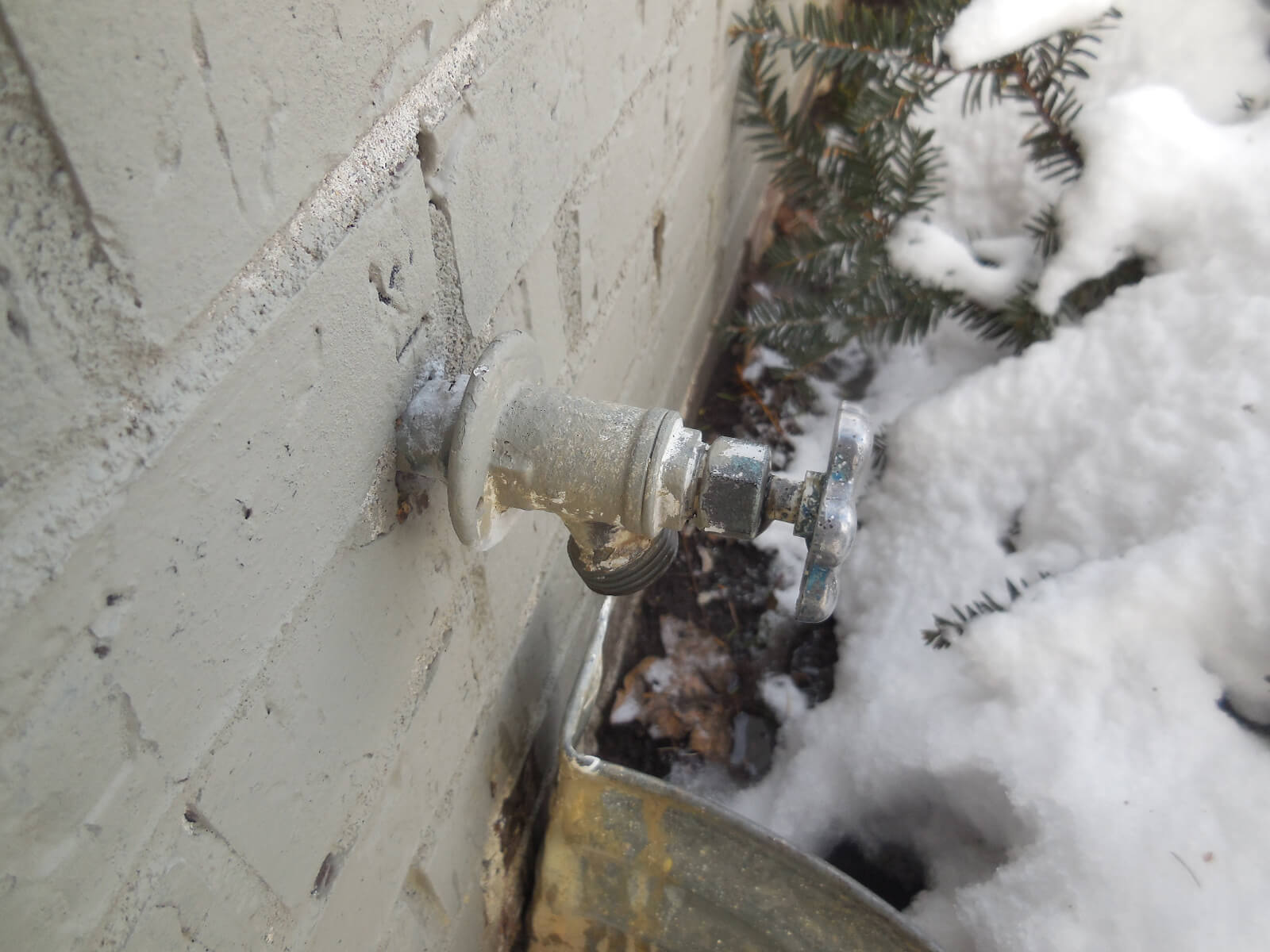 Turn off external faucets: Before cold weather hits, you will need to winterize outside faucets. If you don’t they can freeze, destroying the faucet or even leading to a burst pipe. You will need to disconnect hoses, turn the water to the faucet off inside the house, then drain out any remaining water.
Turn off external faucets: Before cold weather hits, you will need to winterize outside faucets. If you don’t they can freeze, destroying the faucet or even leading to a burst pipe. You will need to disconnect hoses, turn the water to the faucet off inside the house, then drain out any remaining water.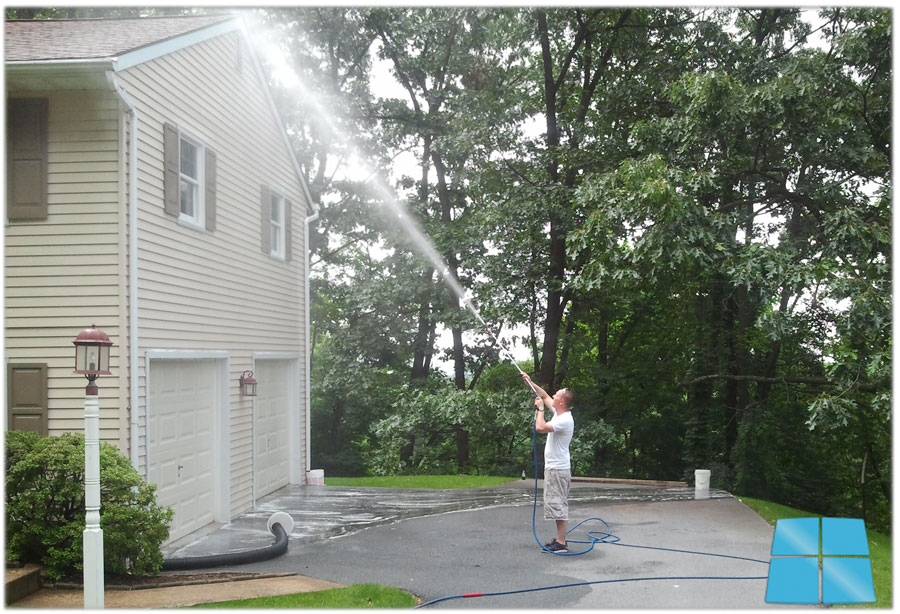 Pressure wash exterior walls: Whether you have siding, brick, stone, or stucco, you’ll need to periodically pressure wash exterior walls to remove mold, mildew, and dirt. Doing so helps to discourage rot and makes your home look more attractive. Using a pressure washer, you can easily clean exterior walls, but exercise caution, avoiding windows and doors, as you may accidentally spray water inside your home.
Pressure wash exterior walls: Whether you have siding, brick, stone, or stucco, you’ll need to periodically pressure wash exterior walls to remove mold, mildew, and dirt. Doing so helps to discourage rot and makes your home look more attractive. Using a pressure washer, you can easily clean exterior walls, but exercise caution, avoiding windows and doors, as you may accidentally spray water inside your home.
